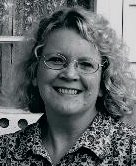Grace

A couple of summers ago I stopped to purchase a print of this photo in the very same studio in the little town of Bovey, MN where the original photograph was taken. I was on my way to Hibbing to pick up my son from his cousins' home, and the highway from Grand Rapids to Hibbing goes right through Bovey, so I thought I'd stop. The studio is in one of those old wooden turn-of-the-century store front buildings butted right up to a sidewalk that is butted right up to the street. It's still a working photography studio--the sort with all the large framed high school graduation and wedding photos lining the walls.
No one was in the lobby, so I had to ring the little bell on the counter. I waited a few minutes before the photographer came out to tend to me. He fetched my print, carefully rolled it, put rubberbands around it to keep it rolled, gave me a little pamphlet with the story of Grace in it and charged me $12.50.
In 1918, the studio was owned and operated by Eric Enstrom. The man in the photograph is Charles Wilden, who showed up at the studio peddling foot scrapers. From the pamphlet:
"There was something about the old gentleman's face that immediately impressed me. I saw that he had a kind face... there weren't any harsh lines in it," Enstrom said in recalling the 1918 visit of Charles Wilden to his studio.I remember wondering what was in that bowl! I think I can even remember childhood conversations about what was in it. I had always thought it was soup of some kind, but it's even more humble grub than home made soup--it's a simple bowl of oatmeal.
It happened that Enstrom, at that time, was preparing a portfolio of pictures to take with him to a convention of the Minnesota Photographer's Association. "I wanted to take a picture that would show people that even though they had to do without many things because of the war they still had much to be thankful for," Enstrom said.
On a small table, Enstrom placed a family book, some spectacles, a bowl of gruel, a loaf of bread, and a knife. Then he had Wilden pose in a manner of prayer... praying with folded hands to his brow before partaking of a meager meal.
To bow his head in prayer seemed to be characteristic of the elderly visitor, Enstrom recalled, for he struck the pose very easily and naturally.
The photo wasn't noticed much at the photographer's convention in 1918, but it became popular as people driving through Bovey discovered the picture in the window of Enstrom's studio and stopped in to purchase it. As soon as one framed print was sold, he'd make another one to take its place in the studio window.
Enstrom always considered this photo to be his very best out of the thousands that he took over the 50 years he worked as a photographer. He thought he had captured something special, something he described like this:
This man doesn't have much of earthly goods, but he has more than most people because he has a thankful heart.One morning back in 1918 an ordinary man was doing his very ordinary job, selling things door-to-door, when he met another ordinary man doing his ordinary job, and the results were extraordinary.
I've matted and framed my print, and it's leaning on the book shelves in the living room. It reminds me of my childhood; it reminds me that small things done well can have lasting results. It also reminds me to be thankful for all that I have--even my morning oatmeal.








<< Home